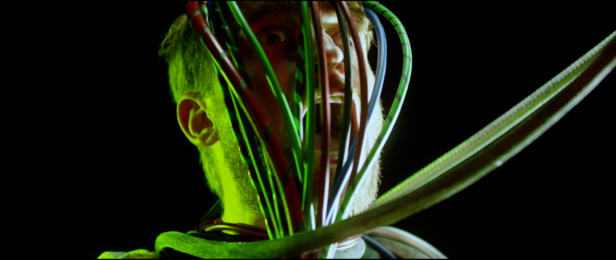Graham Skipper will be best know to Fantasia audiences as the star of Joe Begos’ Almost Human (2013) and The Mind’s Eye (2015) and Jackson Stewart’s Beyond The Gates (2016) – all grimily nostalgic films steeped in the appearance and ethos of Eighties direct-to-video genre fare. It is a retro sensibility that Skipper has retained in his transition to writing and directing features of his own: last year’s Space Clown, and now Sequence Break. The latter’s protagonist Oz (Chase Williamson) is a young millennial lost in an obsession with the past – and more particularly with the outmoded arcade games that he refurbishes (and plays) in the warehouse of his boss Jerry (Lyle Kanouse). Business is bad and, after years of dedicated work, Jerry is about to close shop, leaving Oz, with his intense introversion and obsolescent skills, at the wrong end of an era.
As Oz contemplates a future which has no place for him, two strangers enter his life. The first, Tess (Fabianne Therese), is a fellow geek and gamer, and a perfect match for him. The second is a strange bearded man (John Dinan) who delivers a circuitboard that, once installed by Oz, converts an old arcade machine into a portal to an infinite cosmic world – or to a lo-res labyrinthine trap. This leaves Oz with a binary dilemma: either close himself off from the world forever and immerse himself body and soul into solipsistic joystickery (figured expressly as a masturbatory activity) – or else shift to a more dynamic two-player game with Tess.
At this critical crossroads, Oz’s meltdown is presented through the film grammar of Cronenbergian body horror, as Oz changes and regresses, and the game itself transforms into a highly sexualised hybrid of the analogue and the organic. With its synth score (by Van Hughes), its red-, green- and blue-filtered lighting, its gooey, icky practical effects, and its hallucinatory mergers of man and machine, Sequence Break plays as a lovingly self-conscious throwback to a bygone age of cinema, even as it portrays Oz’s struggle to prick the bubble of his own nostalgia and to break the sequence of a life lived looking ever backwards. The low budget at times shows, and the lo-fi freakout scenes feel as paceless and dated as a first-gen video game – but all that is built right into the circuitry of a film that must reset to the beginning to have any chance of advancing.
Sequence Break was seen and reviewed at Fantasia International Film Festival. For information, visit the website.
